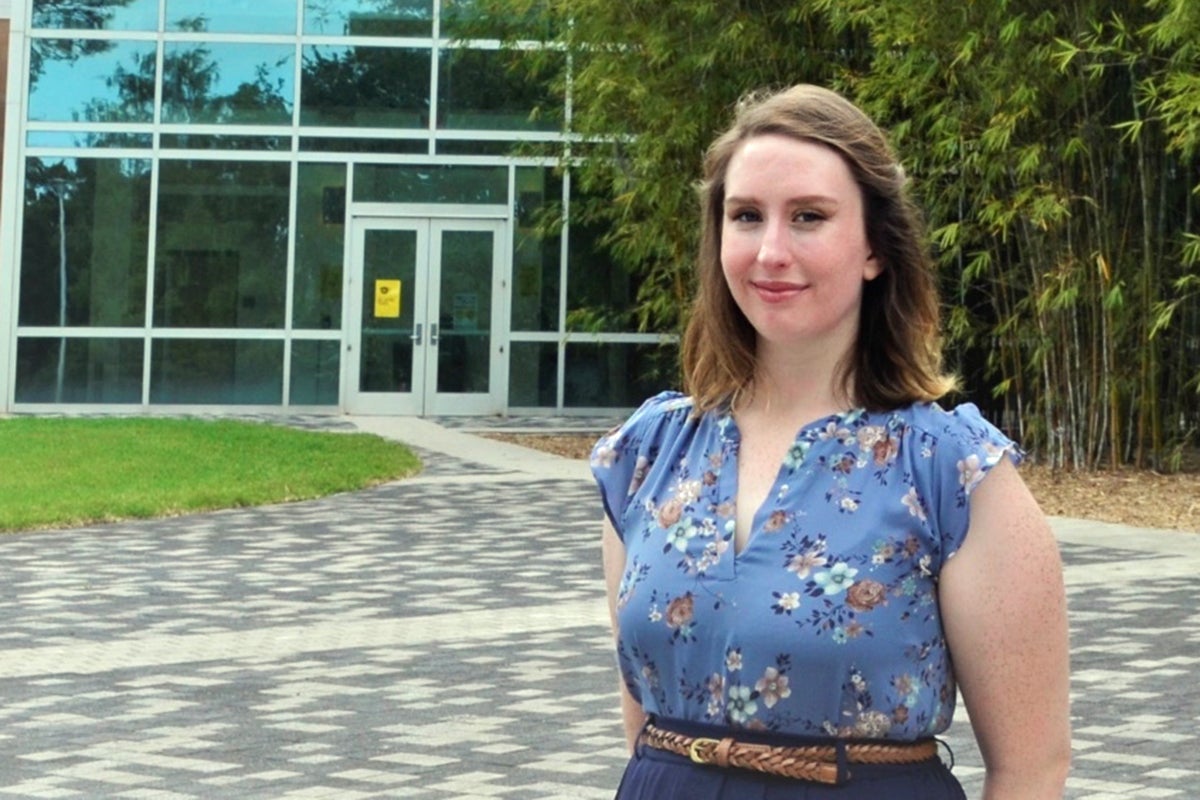As a child growing up on the Space Coast, Caroline Anderson ’19 would stand in her backyard and watch the space shuttles launch from NASA’s Kennedy Space Center. Her lifelong passion for space, coupled with mentorship from several local women who worked as engineers in the space sector, led her to pursue a career in aerospace engineering.
Now, Anderson will move from a spectator to an actor in the space industry through the NASA Space Technology Graduate Research Opportunity (NSTGRO) program. She is one of 58 participants across the nation selected for a fully funded fellowship open only to graduate students at accredited U.S. universities who demonstrate the potential to assist NASA in creating new and innovative space technologies.
“I’m so excited to learn from and work with leading engineers in my field, as we’re on path for a new era of human space exploration,” says the Palm Bay, Florida, native. “I’ve wanted to work with the NASA Ames aerothermodynamics branch, and this fellowship opens the door to do so while I develop my doctoral thesis.”
The research experience lasts for the duration of her degree program. During that time, Anderson will work on a project that she proposed in collaboration with a NASA subject matter expert who will assist her with the research. The fellowship covers expenses to relocate so she can complete her research in person at NASA’s Ames Research Center in California. Anderson will also receive funding to cover research expenses. As a space enthusiast, she says this experience is a dream come true.
Anderson’s research project aims to better control the trajectory of entry vehicles, which need to withstand extremely high levels of heat as they enter or reenter a planet’s atmosphere. For protection, vehicles are equipped with transpiration cooling systems, which circulate fluid along the outside layer to absorb heat. But this cooling method can affect local pressure, something an entry vehicle needs to control in order to adjust its attitude, or orientation in space.
Anderson’s goal is to change how porous the outer layer of the transpiration cooling system is, that should decrease the pressure around the outer layer, which creates a moment or torque about the vehicle’s center.
“That moment is desired for use for attitude adjustments, to alter the vehicle’s trajectory in entry and descent,” Anderson says. “The ability of the concept to still sufficiently protect the vehicle from heat while creating enough of a moment force to change the vehicle’s trajectory is still iffy — so that’s part of what I’ll be investigating.”
Michael Kinzel, an assistant professor who manages the Computational Fluid and Aerodynamics Lab at UCF, says Anderson will be an asset to NASA. He’s gotten to know Anderson in her role as a graduate research assistant in the lab.
“I believe Caroline caught NASA’s attention from her strong performance in school, her broad experience in research and industry, and her creative proposed research project that showed NASA Caroline has new ideas to bring to the table,” Kinzel says. “At CFAL, Caroline has shown the ability and flexibility to work on many projects at advanced levels, which will surely fit in well with her ability to support NASA.”
Anderson earned her bachelor’s degree in aerospace engineering from UCF in 2019 and is pursuing her doctorate in the same field. She is a recipient of the UCF Office of Research’s Doctoral Fellowship. She is the third UCF student to participate in the NSTGRO program since its inception. Elizabeth Barrios ’20PhD was selected in 2016 and Christian Vazquez ’17 ’18MS was selected in 2020.




